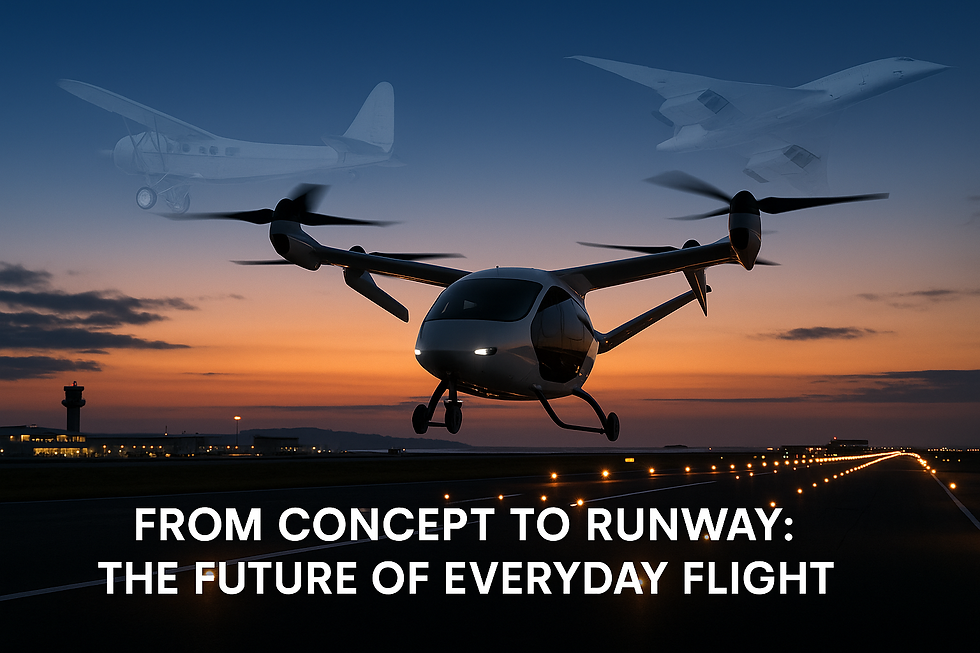What Supernal’s CEO Shake-Up Means for the Future of eVTOL
- Hollocraft Team

- Aug 28
- 2 min read

Aviation has always moved in bursts: the Wright brothers’ first flights in 1903, the jet age of the 1950s, the rise of wide-body aircraft in the 1970s, and the push toward sustainable aviation in the 21st century. Each leap forward has been marked not just by engineering breakthroughs, but by the leaders who guided those breakthroughs into reality.
This week’s news that Jaiwon Shin has been removed as CEO of Supernal, Hyundai’s eVTOL subsidiary, reminds us that leadership transitions have always been pivotal in aviation. From Boeing’s stewardship during the Space Race to Airbus’s bold bet on the A380, the people at the top often determine whether a technology finds its wings—or never leaves the hangar.
Supernal has matched its peers in funding but has yet to match them in progress.
As David Rottblatt steps in as interim COO, the industry is watching closely. Because if history teaches us anything, it’s that the early years of aviation revolutions are fragile—and leadership makes all the difference.
The Funding vs. Progress Dilemma
Supernal has matched its peers in raising capital but hasn’t been able to show comparable progress. This highlights a growing divide in the industry: companies that can turn investment into certifiable aircraft—and those that cannot. For investors, regulators, and commuters waiting for this technology, delays at high-profile players like Supernal create uncertainty.
Why Leadership Matters in Emerging Aviation
Building an eVTOL is not just about engineering; it’s about navigating certification pathways, supply chain complexity, and public trust. Leadership turnover at this stage can stall momentum. Supernal’s shake-up reflects the immense pressure executives face to deliver more than press releases and concept art—they must bring aircraft to market.
Hollocraft’s Perspective
At Hollocraft, we’ve set a different bar: designing an eVTOL our own families would be comfortable flying in every day. That human-centered design approach means we prioritize trust, accessibility, and practical innovation over hype. While others chase headlines, we’re chasing reliability.
What This Means for the Industry
Supernal’s transition underscores the reality that this industry will not be won by the company with the largest balance sheet, but by the one that can integrate safety, design, and user experience into a viable aircraft. As interim leadership stabilizes their direction, it will be critical for them—and all of us in this field—to prove that eVTOL is more than a promise.
Conclusion
Leadership changes are inevitable, especially in industries this new. But for eVTOL to succeed, stability, vision, and execution matter more than ever. At Hollocraft, we remain focused on building trust with the commuters of tomorrow by staying grounded in human-centered design.




Comments